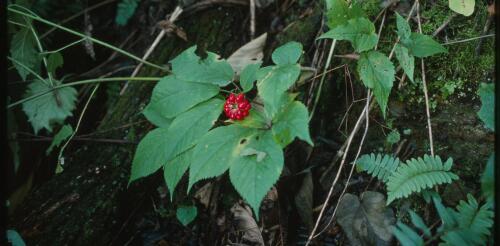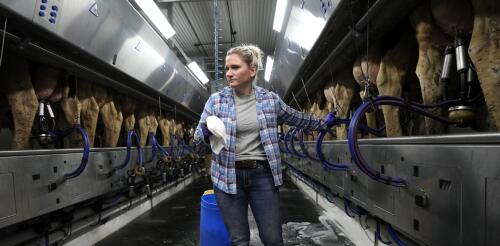Rural life
Across Appalachia, September marks the start of ginseng season, when thousands of people roam the hills searching for hard-to-reach patches of this highly prized plant. Many people know ginseng as an ingredient in vitamin supplements or herbal tea. That ginseng is grown commercially on farms in Wisconsin and Ontario, Canada. In contrast, wild American ginseng is an understory plant that can live for decades in the forests of the Appalachian Mountains. The plant’s taproot grows throughout its life and sells for hundreds of dollars per pound, primarily to East Asian customers who consume it for health reasons. Because it’s such a valuable medicinal plant, harvesting ginseng has helped families in mountainous regions of states such as Kentucky, West Virginia, Tennessee, North Carolina and Ohio weather economic ups and downs since the late 1700s. Most harvesting takes place in Appalachia’s long-enduring forest commons – forests across the region that histo...
Milton Orr looked across the rolling hills in northeast Tennessee. “I remember when we had over 1,000 dairy farms in this county. Now we have less than 40,” Orr, an agriculture adviser for Greene County, Tennessee, told me with a tinge of sadness. That was six years ago. Today, only 14 dairy farms remain in Greene County, and there are only 125 dairy farms in all of Tennessee. Across the country, the dairy industry is seeing the same trend: In 1970, over 648,000 U.S. dairy farms milked cattle. By 2022, only 24,470 dairy farms were in operation. While the number of dairy farms has fallen, the average herd size – the number of cows per farm – has been rising. Today, more than 60% of all milk production occurs on farms with more than 2,500 cows. Dairy farm numbers have fallen over the past few decades, but larger farms have kept the overall number of cows fairly steady. USDA Thi...
Outdoor recreation is on track for another record-setting year. In 2022, U.S. national parks logged more than 300 million visits – and that means a lot more people on roads and trails. While research shows that spending time outside is good for physical and mental health, long lines and gridlocked roads can make the experience a lot less fun. Crowding also makes it harder for park staff to protect wildlife and fragile lands and respond to emergencies. To manage the crowds, some parks are experimenting with timed-entry vehicle reservation systems and permits for popular trails. For all of their popularity, national parks are just one subset of U.S. public lands. Across the nation, the federal government owns more than 640 million acres (2.6 million square kilometers) of land. Depending on each site’s mission, its uses may include logging, livestock grazing, mining, oil and gas production, wildlife habitat or recreation – often, several of these at once. In con...
Kerissa and Charlie Payne are beginning farmers living their dream of raising two daughters on a farm in Central Ohio. By conventional measures, their livestock farm, Covey Rise, is a success. Yet, below the surface, the challenge of finding quality affordable child care has kept their business from growing and reaching its full potential. “It feels like we’re always split between keeping the kids safe on the farm, being a good parent, and the needs of the farm,” Kerissa Payne said. The United States has a child care crisis, yet the issue remains largely invisible in the farm sector. For too long, the nation has ignored the fact that farm parents are working parents who must juggle child care while working what can be one of the most dangerous and stressful jobs in America. But as Bob Dylan might say, “The times they are a-changin’.” For the first time in history, the two largest farm organizations, the American Farm Bureau and the National...
About 23 million U.S. households depend on private wells as their primary drinking water source. These homeowners are entirely responsible for ensuring that the water from their wells is safe for human consumption. Multiple studies show that, at best, half of private well owners are testing with any frequency, and very few households test once or more yearly, as public health officials recommend. Even in Iowa, which has some of the strongest state-level policies for protecting private well users, state funds for free private water quality testing regularly go unspent. Is the water these households are drinking safe? There’s not much systematic evidence, but the risks may be large. The U.S. Environmental Protection Agency still relies on a 15-year-old study showing that among 2,000 households, 1 in 5 households’ well water contained at least one contaminant at levels above the thresholds that public water systems must meet. While other researchers have studied thi...




